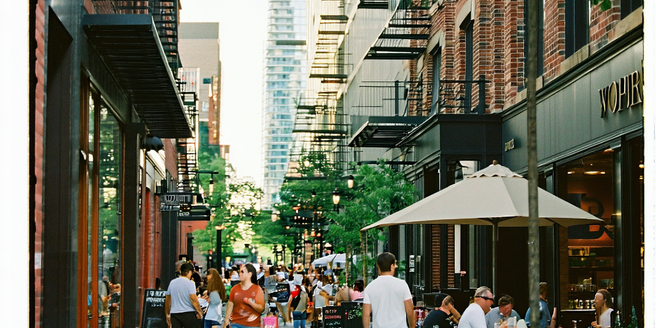Gentrification And Its Influence On Rent

Understanding Gentrification: A Brief Overview
Gentrification occurs when wealthier individuals move into urban neighborhoods, causing transformations in the area’s social fabric and economic status. It often results in the renovation of housing, increased property values, and the displacement of lower-income families. While gentrification can revitalize neighborhoods by reducing crime rates and bringing new economic opportunities, it also raises critical concerns about the forced migration of long-term residents. Understanding gentrification requires a look into its historical context, typically linked to shifts in urban planning and economic policies. Over the years, this phenomenon has sparked debates on urban development policies and the need to balance progress with inclusivity. As neighborhoods change, the conversation around gentrification centers on finding ways to foster growth while ensuring some level of housing equity.
The Economic Impact on Rental Markets
Gentrification significantly impacts rental markets, often leading to increased rent prices as demand outweighs supply in newly desirable neighborhoods. As gentrifying areas become more attractive to higher-income tenants, property owners seize the opportunity to maximize profits by raising rent. This often prices out existing residents who can no longer afford the escalating costs, leading to displacement and increased economic pressure on nearby communities. The rental market experiences a shift as the influx of wealthier residents changes the demographic landscape, influencing local services and amenities. Economists and urban planners closely examine these dynamics, attempting to understand the long-term effects on affected communities. The challenge lies in creating economic policies that balance the growth of rental markets without marginalizing lower-income households.
Social and Cultural Shifts in Gentrified Areas
Gentrification brings profound social and cultural changes to neighborhoods, altering their identity and community life. As new residents with different socioeconomic backgrounds move in, they weave different cultural values and norms into the fabric of the community. This often leads to the displacement of long-standing cultural traditions and the erasure of historical relevance significant to the original residents. While diversity can enrich a community, the imbalance often privileges newcomers’ preferences over the established culture, contributing to a sense of loss and alienation among longtime inhabitants. Efforts to preserve cultural heritage and foster community inclusion are crucial as neighborhoods evolve. The social fabric of gentrified areas reflects the complexities of integrating diverse populations while maintaining respect for historical context and cultural heritage.
Case Studies: Cities Affected by Gentrification
Several cities worldwide serve as prime examples of gentrification’s effects, each offering unique insights into how varying policies and economic landscapes shape outcomes. In Brooklyn, New York, gentrification has dramatically transformed neighborhoods like Williamsburg from industrial zones to trendy, upscale communities. Similarly, San Francisco’s Mission District has experienced a tech-fueled gentrification wave, pushing out many long-term Hispanic residents. London showcases another scenario, where gentrification driven by housing demand and international investment reshapes districts like Shoreditch. Each case highlights both the benefits and criticisms of gentrification, demonstrating the complex interplay between development, displacement, and cultural preservation. Analyzing these cities provides valuable lessons in crafting urban policies that mitigate negative impacts while fostering equitable growth and sustainability.
Policy Responses and Possible Solutions
Addressing the challenges posed by gentrification calls for thoughtful policy responses aimed at preserving affordable housing and ensuring equitable urban development. One approach includes implementing rent control measures, which can help prevent sudden rent hikes that displace existing residents. Additionally, inclusionary zoning policies encourage or require developers to allocate a portion of new housing units for low- and moderate-income families. Community land trusts present a grassroots solution, allowing communities to collectively own and manage land to benefit local residents. Policymakers also explore tenant protection laws to safeguard renters’ rights, along with incentives for maintaining affordable housing stock. Effective solutions require collaboration across government, community organizations, and private sector stakeholders to balance growth with inclusivity, ensuring that urban revitalization becomes an opportunity for all residents.